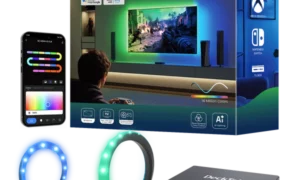You’re in your cozy kitchen, the heart of your home, sipping your morning coffee as the sun streams in through newly installed energy-efficient windows. You can feel the warmth without a draft, and the knowledge that you’re saving money on your energy bills while reducing your carbon footprint brings a smile to your face. Welcome to the world of energy-efficient home upgrades, where comfort, savings, and sustainability come together seamlessly.
In a world where environmental consciousness is on the rise, and utility bills continue to climb, the concept of energy efficiency has become more than just a buzzword; it’s a way of life. Whether you’re renovating your kitchen extension, considering a home extension, or simply looking to make your living space more eco-friendly, there are a plethora of energy-efficient upgrades that can transform your home into an energy-saving haven.
In this comprehensive guide, we’ll explore the fascinating world of energy-efficient home upgrades, touching on key aspects such as kitchen extensions, insulation, lighting, appliances, and more. Not only will you discover how these upgrades can save you money in the long run, but you’ll also learn how they contribute to a healthier planet by reducing greenhouse gas emissions. So, grab your favorite eco-friendly snack and join us on a journey to a more sustainable and cost-effective living space.
The Kitchen Extension: A Hub of Efficiency
Let’s start our energy-efficient home upgrade journey with a focal point of many households—the kitchen. Often referred to as the heart of the home, the kitchen is not just a place for culinary adventures but also a space where energy efficiency can make a substantial impact.
Many homeowners dream of expanding their kitchens, whether to accommodate a growing family, enhance functionality, or simply to create a more inviting and open space. This is where a kitchen extension comes into play. However, the key to making it energy-efficient lies in the details.
- Design with Natural Light: When planning your kitchen extension, prioritize natural light. Incorporate large windows and skylights strategically to maximize daylight hours. This reduces the need for artificial lighting, saving energy and creating a bright and cheerful atmosphere.
- Energy-Efficient Windows and Doors: Choose energy-efficient windows and doors for your kitchen extension. Double-glazed or triple-glazed windows with low-emissivity coatings help maintain a comfortable temperature, minimizing the need for heating or cooling.
- Insulation: Proper insulation is crucial for an energy-efficient kitchen extension. Ensure that walls, floors, and ceilings are well-insulated to prevent heat loss in the winter and heat gain in the summer.
- High-Efficiency Appliances: When selecting kitchen appliances, opt for those with high Energy Star ratings. Energy-efficient refrigerators, dishwashers, and ovens consume less electricity, helping you save on energy bills.
- LED Lighting: Illuminate your kitchen extension with LED lighting. LED bulbs are energy-efficient, have a longer lifespan, and emit minimal heat, making them a sustainable choice.
- Solar Panels: Consider installing solar panels on the roof of your kitchen extension. Solar energy can power your kitchen and even feed excess electricity back into the grid, potentially earning you credits.
- Proper Ventilation: Invest in a ventilation system with heat recovery to maintain a comfortable indoor environment. This system exchanges indoor and outdoor air while recovering heat from the exhaust, reducing the need for additional heating.
By implementing these energy-efficient design elements and appliances in your kitchen extension, you not only create a beautiful and functional space but also contribute to significant energy savings.
Whole-House Insulation: The Foundation of Efficiency
While the kitchen is a prominent area for energy-efficient upgrades, don’t overlook the importance of whole-house insulation. Proper insulation is the foundation of an energy-efficient home and plays a pivotal role in maintaining a comfortable indoor environment year-round.
- Roof Insulation: Start at the top with roof insulation. An inadequately insulated roof can lead to significant heat loss in the winter and increased cooling costs in the summer. Consider adding extra insulation to your attic or roof space.
- Wall Insulation: Wall insulation is essential for temperature regulation and energy efficiency. Depending on your home’s construction, options include cavity wall insulation or external wall insulation.
- Floor Insulation: Insulating your floors can prevent heat from escaping through the ground, especially in homes with crawl spaces or basements. Proper insulation helps maintain consistent indoor temperatures and reduces energy consumption.
- Sealing Gaps and Cracks: Don’t forget to seal gaps and cracks around windows, doors, and other openings. Air leaks can significantly impact heating and cooling efficiency.
- Energy-Efficient Roofing: Consider upgrading your roofing materials to energy-efficient options that reflect more sunlight and absorb less heat. Addressing any issues promptly, such as leaking roof repairs, can also help improve your home’s energy efficiency. Cool roofing materials can reduce cooling costs and increase overall comfort.
Investing in whole-house insulation not only leads to substantial energy savings but also creates a more comfortable and sustainable living environment. It reduces the workload on your heating and cooling systems, prolonging their lifespan and decreasing maintenance costs.
Efficient Lighting: Bright Ideas for Savings
One of the simplest yet most effective energy-efficient home upgrades is lighting. Lighting accounts for a significant portion of household energy consumption, but with the right choices, you can illuminate your home while reducing your energy bills.
- LED Bulbs: LED (Light Emitting Diode) bulbs have revolutionized home lighting. They use significantly less energy than traditional incandescent bulbs and have a much longer lifespan. LED bulbs are available in various color temperatures, making them suitable for different lighting needs.
- Smart Lighting: Consider installing smart lighting systems that allow you to control lighting levels and schedules through smartphone apps or voice commands. This not only saves energy but also adds convenience to your daily life.
- Motion Sensors: Install motion sensors in rooms where lights are often left on unintentionally, such as bathrooms, hallways, or closets. These sensors automatically turn off lights when no motion is detected, reducing energy waste.
- Daylighting: Maximize natural daylight whenever possible. Position furniture and workspaces near windows to take advantage of natural light during the day. Use light-colored window treatments to diffuse sunlight without blocking it.
- Dimmer Switches: Dimmer switches allow you to adjust lighting levels according to your needs. They are particularly useful in areas where flexibility in lighting is desired, such as dining rooms and bedrooms.
By incorporating energy-efficient lighting solutions throughout your home, you can significantly reduce electricity consumption and lower your energy bills while enjoying well-lit and inviting spaces.
Appliance Upgrades: Modern Efficiency
Another area where energy-efficient home upgrades can make a substantial impact is your choice of household appliances. Modern appliances are designed with energy efficiency in mind, offering significant savings over their older counterparts.
- Energy Star Certification: When shopping for appliances, look for the Energy Star label. Energy Star-certified appliances meet strict energy efficiency standards set by the U.S. Environmental Protection Agency (EPA).
- Refrigerators: Energy-efficient refrigerators are designed with better insulation and compressor technology, consuming less electricity while maintaining optimal temperature levels.
- Dishwashers: Modern dishwashers use less water and energy compared to older models. They also offer various wash cycle options to suit different needs, from light loads to heavily soiled dishes.
- Washers and Dryers: Energy-efficient washing machines and dryers use less water and energy, resulting inreduced utility bills. Front-loading washers are particularly efficient and require less detergent.
- Water Heaters: Consider upgrading to a high-efficiency water heater, such as a tankless or heat pump water heater. These units heat water on demand, minimizing standby energy losses.
- Cooking Appliances: Induction cooktops and convection ovens are energy-efficient alternatives to traditional electric or gas stoves. They heat up faster and provide precise temperature control.
- Smart Appliances: Explore smart appliances that offer energy-saving features, such as delayed start times and remote control capabilities. These features allow you to optimize energy usage based on your schedule.
By gradually replacing older appliances with energy-efficient models, you can reduce your home’s energy consumption and water usage, leading to lower utility bills and a reduced environmental footprint.
Renewable Energy Solutions: Powering the Future
To take your commitment to energy efficiency and sustainability to the next level, consider incorporating renewable energy solutions into your home.
- Solar Panels: Solar panels are a well-established renewable energy source that converts sunlight into electricity. Installing solar panels on your roof allows you to generate clean, renewable energy to power your home and potentially earn credits by feeding excess electricity back into the grid.
- Wind Turbines: Depending on your location and property size, wind turbines can harness wind energy to generate electricity. Small-scale residential wind turbines can supplement your energy needs and reduce your reliance on the grid.
- Geothermal Heating and Cooling: Geothermal heat pumps use the earth’s stable temperature to heat and cool your home efficiently. They are highly energy-efficient and provide consistent indoor comfort year-round.
- Hydroelectric Systems: If you have access to flowing water on your property, a micro-hydroelectric system can generate electricity from water flow. This renewable energy source can be used to power your home or supplement your energy needs.
- Energy Storage: Combine renewable energy sources with energy storage solutions, such as home batteries, to store excess energy for use during periods of high demand or when renewable energy generation is low.
Integrating renewable energy solutions into your home not only reduces your reliance on fossil fuels but also provides long-term energy cost savings and contributes to a greener planet.
The Benefits Beyond Savings
While the cost savings associated with energy-efficient home upgrades are undoubtedly appealing, the benefits extend beyond your wallet. Here are some additional advantages:
- Environmental Impact: Reducing energy consumption lowers greenhouse gas emissions and lessens your carbon footprint, helping combat climate change and protect the environment.
- Improved Comfort: Energy-efficient upgrades often result in improved indoor comfort, with consistent temperatures, better insulation, and reduced drafts.
- Increased Property Value: An energy-efficient home is more attractive to potential buyers and can command a higher resale value.
- Government Incentives: Many governments offer incentives, tax credits, and rebates for energy-efficient home improvements, making these upgrades even more affordable.
- Reduced Maintenance: Energy-efficient appliances and systems typically require less maintenance and have longer lifespans, reducing the need for repairs and replacements.
- Healthier Indoor Environment: Improved ventilation and air quality, common in energy-efficient homes, contribute to a healthier living space.
Embark on Your Energy-Efficient Journey
As you embark on your energy-efficient journey, it’s essential to start with a comprehensive home energy audit. This assessment will help you identify areas where your home can benefit from energy-efficient upgrades and prioritize improvements based on your specific needs and budget.
Remember that energy-efficient upgrades can be implemented gradually, allowing you to tailor your approach to your unique circumstances. Whether you’re planning a kitchen extension, enhancing insulation, upgrading lighting and appliances, or embracing renewable energy solutions, every step you take brings you closer to a more sustainable, cost-effective, and environmentally friendly home.
In conclusion, energy-efficient home upgrades offer a win-win solution: you save money while contributing to a cleaner, greener planet. By making informed choices and embracing energy-efficient technologies and practices, you can transform your home into an energy-saving sanctuary—one that not only benefits your wallet but also leaves a positive impact on the world around you. So, get ready to enjoy the comfort, savings, and environmental benefits of your energy-efficient home upgrades, and take pride in knowing that you’re part of a brighter, more sustainable future.

































